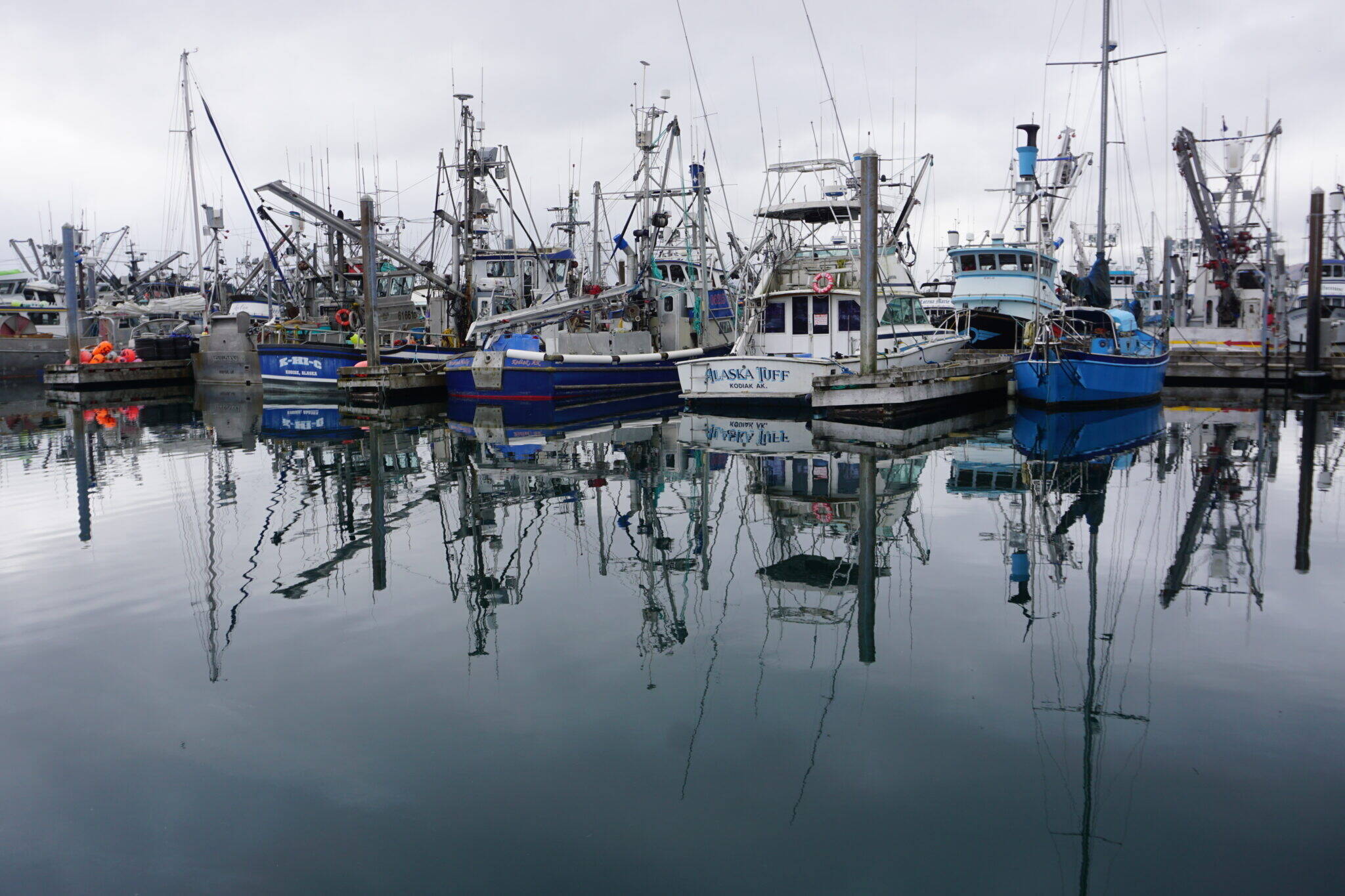Russian fish flooding global markets and other economic forces beyond the state’s border have created dire conditions for Alaska’s seafood industry.
Now key legislators are seeking to establish a task force to come up with some responses to the low prices, lost market share, lost jobs and lost income being suffered by fishers, fishing companies and fishing-related communities.
The measure, Senate Concurrent Resolution 10, was introduced on March 1 and is sponsored by the Senate Finance Committee.
“Alaska’s seafood industry is in a tailspin from facing unprecedented challenges,” said the measure’s sponsor statement issued by the committee’s co-chairs: Sen. Bert Stedman, R-Sitka; Sen. Lyman Hoffman, D-Bethel; and Sen. Donny Olson, D-Golovin. The measure is also being promoted by Senate President Gary Stevens, R-Kodiak.
The industry’s troubles caused a loss to Alaska’s economy of more than $2 billion in 2023, the sponsor statement says.
The resolution got its first hearing on Thursday in the committee that introduced it.
The Joint Legislative Seafood Industry Task Force task force idea is modeled after one created 20 years ago to help the then-struggling Alaska salmon industry, Tim Lamkin, a Stevens staff member working on the subject, told the finance committee.
Then, Alaska salmon fishers and sellers were facing low prices and a shrunken global market share caused by booming production of cheap farmed salmon. That 15-member task force needed two years to complete its work, Lamkin said.
In contrast, the Joint Legislative Seafood Industry Task Force would consist of seven members and would present its findings and recommendations to the legislature in less than a year, by Jan. 21, 2025, according to the resolution wording.
However, the measure is still a work in progress, with the size and makeup of the task force among the details to be worked out during the rest of the session, Lamkin told the committee.
Testifying in favor were the chief executive of OBI, one of Alaska’s major seafood processing companies; the president of the Pacific Seafood Processors Association; the executive director of the Alaska Seafood Marketing Institute, a state-owned corporation funded in part by the industry; the head of United Fishermen of Alaska, a large trade association of commercial fishers; the head of the Commercial Fisheries Entry Commission; and the mayor of the Kodiak Island Borough.
That mayor, Scott Arndt, said industry woes have caused severe strain in his region. He mentioned the pending closure or sale of Trident Seafood plants, which have been economic pillars in the region, and a looming 12.5% increase in Kodiak Electric Association rates – the first increase in 30 years – that is needed, in part, because of reduced sales to seafood processors.
“We have stress in all species, along with all markets for seafood prices. In my 60 years as a resident of Kodiak, I have never seen it this bad. It is scary for a lot of families,” he said.
UFA Executive Director Tracy Welch, who said her association in February voted unanimously in support of such a task force, ran through a list of industry troubles.
“Alaska’s seafood industry is facing unprecedented challenges in every area of the state and across every fishery. Alaskan fishermen, processors, processing workers, support businesses, communities are confronted with low prices, plant closures, lost markets and foregone fishing opportunities,” she said.
The more than $2 billion in losses in 2023 affect communities and state government as well as the private sector, she noted.
“I cannot sum up the situation more succinctly than by saying the Alaska seafood industry is in crisis,” she said.
Russia is the source of a significant amount of trouble for the industry, said ASMI Executive Director Jeremy Woodrow.
He cited a dramatic example. While Alaska’s 2023 pink salmon harvest of nearly 200,000 metric tons was large, Russia harvested over three times that much, he said. And while sales of Russian fish are banned in the United States, Alaska still competes with Russian fish in the global marketplace, he said.
Global inflation is another challenge, causing demand for seafood to slide, he said, while high interest rates are squeezing harvesters and processors.
“There is no silver bullet to solve the challenges we face, and this situation certainly will not turn around overnight,” Woodrow said.
John Hanrahan, OBI’s chief executive, identified some potential state actions that could provide some relief. He suggested increased funding for ASMI to broaden markets, loan guarantees to help offset the impact of high interest rates, and purchases of Alaska seafood for state food-assistance programs – similar to the recently announced U.S. Department of Agriculture commitment to buy large quantities of salmon and pollock for federal nutrition and school lunch programs.
The salmon task force work of the early 2000s resulted in some legislation and policy changes. In general, industry and state efforts at that time started to focus on differentiating Alaska wild salmon as a premium product. Within a decade, that focus on higher quality, more niche marketing and new markets was showing some success, according to a 2012 analysis by Gunnar Knapp of the University of Alaska Anchorage’s Institute for Social and Economic Research.
• Yereth Rosen came to Alaska in 1987 to work for the Anchorage Times. She has reported for Reuters, for the Alaska Dispatch News, for Arctic Today and for other organizations. She covers environmental issues, energy, climate change, natural resources, economic and business news, health, science and Arctic concerns. This story originally appeared at alaskabeacon.com. Alaska Beacon, an affiliate of States Newsroom, is an independent, nonpartisan news organization focused on connecting Alaskans to their state government.

